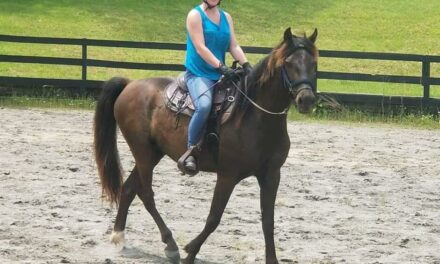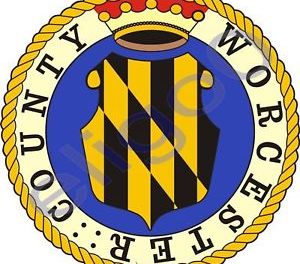by Carrie Hull (first printed in the October 2019 Equiery)
Fall has arrived and we edge closer and closer to the holiday season and the dawn of a new year. In 2019, we celebrated milestone anniversaries of many equine related organizations in Maryland. In 2020, it is our turn. Next year marks the 35th anniversary of the Maryland Horse Council and the 30th anniversary of The Equiery. Two organizations linked intrinsically since inception in mission and now linked organizationally as the voice of the Maryland horse community.
It has been my honor to lead both of these programs over the last year and I look forward to celebrating with you in 2020. We have a lot planned already and will be again sharing with you the history and achievements of the Maryland Horse Council and The Equiery over the last three decades. In fact, the Maryland Horse Council has been officially publishing news and updates in The Equiery since 1991!
Just two years later in 1993, the Maryland Horse Council led efforts to defeat an attempt to replace the Maryland state sport of jousting with lacrosse. Today, we are very proud that jousting remains the state sport of Maryland. In 1998, MHC spearheaded the legislation that created the Maryland Horse Industry Board. We’ve enjoyed a close relationship with MHIB since then.
These early highlights are just a few of the remarkable achievements of the Horse Council. During the upcoming year, we will share many more and will ask you to share your stories of both MHC and The Equiery as well. Be on the lookout for further communications on social media.
This November marks another milestone: the first in a series of annual editions to highlight how Maryland gives back to the horse community. These features will coincide with the Giving Tuesday movement (the Tuesday following Black Friday, created as a day of global giving) and year-end local fundraising efforts.
So as the season changes and the days get colder, your friends at the Maryland Horse Council and The Equiery urge you to remember to let warmth grow in your home and heart. Your support over the years has made an incredible impact on our Maryland horses. Your continued support will ensure a rich equine legacy for the state.
Results of the 2020 Legislative Priorities for the Maryland Horse Council Survey
In June, we conducted a survey to determine legislative priorities for the 2020 session. This survey was sent to all members of the Maryland Horse Council using email addresses on file. If you need to update any information including your best email contact, please write to membership@mdhorsecouncil.org.
This survey is an exclusive benefit of membership in the Maryland Horse Council. If you believe you are a member and did not receive the survey, please write to admin@mdhorsecouncil.org or call 844-MDHORSE.
This question presented in the survey was, “As we form our 2020 Legislative Priorities for the Maryland Horse Council, we want to hear from you! Please rate the following potential MHC legislative initiatives in order of importance to you. 1 is most important and 5 is least important. Thank you!”
We received 66 responses for each of the following surveyed priorities. Results are listed in order of importance as determined by the survey.
• Addressing safety concerns surrounding bicyclists on rural roads and their interaction with horse trailers and other slow-moving agricultural equipment. Rating: 3.1
• Addressing efforts by some members of the public to harass working horses (e.g. carriage horses). Rating: 2.9
• Introducing a Safe Parks Act to reserve one day each weekend on which no firearms or other weapons are permitted on public land. Rating: 2.7
• Improving early detection and intervention in potential abuse and neglect by sport horse and pleasure horse breeders, through changes in the state stable licensing and inspection law. Rating: 2.2
• Improving the current process surrounding seizure of abused and neglected horses, including the cost of care of seized horses during the legal process. Rating: 2.0
*The Rating Score is the weighted average calculated by dividing the sum of all weighted ratings by the number of total responses.












